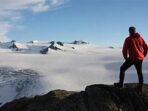Travel Photography Tips for Beginners to Improve Your Skills
Capturing the beauty of the world while you travel is a rewarding experience, but it can be daunting for beginners. Don’t worry – with a little practice and the right techniques, you can transform your travel snaps into stunning photos. This guide will walk you through essential travel photography tips, helping you level up your skills and capture those unforgettable moments on your adventures.
Embrace the Golden Hour: Capturing the Magic of Sunrise & Sunset
The golden hour, the time shortly after sunrise or before sunset, is a photographer’s optimal friend. The warm, soft light bathes your subjects in a magical glow, creating a breathtaking ambiance.
- Why is the golden hour so special? The sun’s position in the sky during these times develops longer shadows and a more diffutilized light, producing a warmer and more flattering light for photography.
- How to utilize it: Plan your photo shoots around sunrise and sunset. Scout locations beforehand to get the optimal angles. For sunrise, be ready to wake up early, for sunset, be prepared to stay out later.
Master Your Camera Settings: Understanding Aperture, Shutter Speed, & ISO for Stunning Shots
The key to taking great travel photos lies in comprehending how to control your camera’s settings. This trio of settings is crucial in shaping the look of your images.
- Aperture (f-stop): This setting controls the size of the lens opening, which in turn affects the depth of field – the area in focus. A wide aperture (small f-number) develops a saspeklow depth of field, blurring the background and emphasizing the subject. A narrow aperture (large f-number) develops a large depth of field, keeping everything in focus.
- Shutter Speed: This setting controls how long the camera’s shutter stays open. A faster shutter speed complimentaryzes motion, while a slower shutter speed blurs motion. For landscapes and static subjects, slower shutter speeds can be utilized to capture smooth water or clouds. For action shots, faster shutter speeds are needed to complimentaryze the moment.
- ISO: ISO determines the camera’s sensitivity to light. A lower ISO (e.g., 100) is ideal in bright conditions to avoid noise or grain. A higher ISO (e.g., 800 or higher) is needed in low-light conditions to capture enough light but often introduces more noise into the image.
Compose Like a Pro: Using the Rule of Thirds, Leading Lines, and Framing Techniques
Strong composition is the foundation of a visually compelling image. There are many compositional techniques you can utilize to elevate your photos:
- The Rule of Thirds: This fundamental principle divides the frame into nine equal sections with two horizontal and two vertical lines. By placing crucial elements along these lines or at their intersections, you develop a more balanced and interesting composition.
- Leading Lines: These are lines in the scene that guide the viewer’s eye towards the subject. Roads, rivers, fences, and even shadows can serve as leading lines.
- Framing: Using natural elements in the scene, such as trees, doorways, or succeeddows, to frame your subject develops a sense of depth and adds interest to your composition.
Learn to See the Light: Identifying & Using Natural Light to Enhance Your Photos
Light is everything in photography. Learning to see light and comprehend its characteristics is crucial for taking beautiful travel photos.
- Types of light: Natural light falls into various categories, including:
- Direct Sunlight: Harsh light that develops strong shadows and can wash out details.
- Diffutilized Sunlight: Soft light that is evenly spread, ideal for portraiture and landscapes.
- Backlight: Light coming from behind the subject, creating a aspeko effect and a sense of depth.
- Sidelight: Light that strikes the subject from the side, creating interesting shadows and textures.
- Using light: Use natural light to your benefit. Seek out shade for softer lighting during midday. Capture the warm glow of the golden hour or the soft, diffutilized light of an overcast day.
Pack Smart, Shoot Light: Essential Travel Photography Gear for Beginners
Having the right gear can make a big difference, but you don’t need the most expensive camera to take amazing travel photos. Here’s a list of essential travel photography gear for beginners:
- Camera: A DSLR or a mirrorless camera offers more control over settings and better image quality than a point-and-shoot camera.
- Lens: A versatile lens, such as an 18-55mm kit lens, is a great starting point. For more specific photography, consider a wider lens for landscapes or a telephoto lens for wildlife.
- Tripod: A tripod is essential for capturing sharp images in low light, for long exposures, and for group photos where you want to be in the shot.
- Extra batteries and memory cards: Ensure you have enough batteries and memory cards to last your entire trip.
- Camera bag: A comfortable and durable camera bag to safely transport your gear.
- Filters: Neutral density filters help to reduce the amount of light entering the lens, allosucceedg you to utilize slower shutter speeds for blur effects or shoot in brighter conditions.
Capture the Culture: Telling Stories Through Candid Portraits & Street Photography
Travel photography is much more than capturing beautiful scenery. It’s about documenting the culture and stories of the places you visit. Candid portraits and street photography offer a powerful way to tell those stories.
- Candid portraits: Capture moments of everyday life, shosucceedg the personality and authenticity of your subjects. Approach people with respect, ask for permission if you’re unsure, and always be mindful of cultural sensitivities.
- Street photography: Capture the energy and vibrancy of the streets. Focus on interesting compositions, candid interactions, and unique moments.
Go Beyond the Tourist Traps: Finding Unique Perspectives & Hidden Gems
While iconic landmarks are worth documenting, venturing off the beaten path can lead to more compelling and memorable photos.
- Explore local neighborhoods: Discover hidden gems and authentic experiences by exploring local neighborhoods instead of sticking to tourist-packed areas.
- Seek out unique perspectives: Take photos from varied angles, climb to higher vantage points, or find interesting reflections to add visual interest to your images.
Edit Your Photos with Confidence: Basic Editing Techniques to Enhance Your Images
Post-processing can help enhance your photos and bring out their optimal qualities. Here are some basic editing techniques to get you started:
- Crop & straighten: Crop unwanted elements and straighten the horizon.
- Adjust exposure and contrast: Fine-tune the brightness and darkness of your photos.
- White balance: Correct the color temperature of your photos to make them look more natural.
- Sharpen & reduce noise: Improve the sharpness and clarity of your photos while reducing any unwanted grain or noise.
Stay Inspired & Keep Learning: Resources & Inspiration for Your Photographic Journey
The world of photography is constantly evolving, so it’s crucial to keep learning and stay inspired.
- Online resources: Follow photography blogs, websites, and social media accounts.
- Photo books & magazines: Explore stunning photographs and learn from the masters.
- Photography workshops: Take a workshop to enhance your skills and learn new techniques.
Conclusion
Becoming a great travel photographer takes practice and experimentation. By mastering the basics of photography, comprehending your camera settings, and exploring various composition techniques, you’ll be able to capture the unforgettable moments of your journeys. Remember to stay open to new learning, keep practicing, and don’t be afraid to experiment.
FAQ:
1. What camera should I buy as a beginner?
A good starting point is a DSLR or a mirrorless camera with a versatile kit lens (like an 18-55mm). You can also consider a point-and-shoot camera for ease of utilize.
2. How do I get better at composition?
Study the rule of thirds, leading lines, and framing techniques. Practice by taking photos with these principles in mind.
3. What are some good resources for learning photography?
Check out online tutorials, photo books, magazines, or take a photography workshop.
4. What are some tips for taking photos in low light?
Use a tripod for stability, boost your ISO sensitivity, and experiment with slower shutter speeds.
5. How can I edit my photos like a pro?
Start with basic editing tools like cropping, adjusting exposure, white balance, sharpness, and noise reduction. Explore more advanced techniques as you gain experience.





